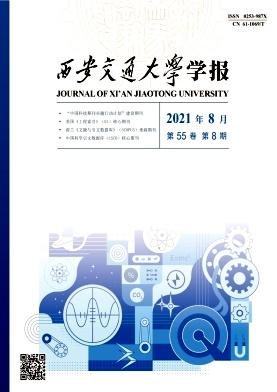Drug-resistance of MDR-TB in Xi'an between 2018 and 2020 and the impact of COVID-19 epidemic prevention and control on it
Q3 Engineering
Hsi-An Chiao Tung Ta Hsueh/Journal of Xi''an Jiaotong University
Pub Date : 2021-01-01
DOI:10.7652/jdyxb202104012
引用次数: 0
Abstract
Objective: To understand the epidemic status of drug-resistant Mycobacteriun tuberculosis in Xi'an in the past three years, and the impact of COVID-19 epidemic during 2020 so as to provide basic information for local multidrug-resistant tuberculosis (MDR-TB) prevention and treatment. Methods: Tuberculosis (TB) detected by sputum culture, the corresponding drug susceptibility tests data, and basic clinical information of TB patients diagnosed in Xi'an from January 2018 to October 2020 were collected from the management system;then the epidemic status and the drug resistance status were analyzed. Multinomial logistic regression was used to analyze the relationship between the patients' treatment history and the drug resistance of TB strains, and the trend of changes in the drug resistance rate in retreated patients. Results: In the past three years, there was a total drug resistance rate of 25.3% in 5 146 strains of MTB, and 24.8% in treatment initiation and 38.22% in retreatment, respectively. The treatment initiation patients showed a decreased MDR-TB detection rate, and the retreated patients had an increased MDR-TB detection rate. The spectrum of MDR-TB in the retreated patients gradually became more complicated, and the resistance rate of second-line drugs such as Kanamycin and Ofloxacin gradually increased. There were 10 drug-resistant combinations mainly in H+R+S and H+R+S+E. During the year 2020 of COVID-19 epidemic, the number of initial and retreated patients decreased significantly compared with that in 2018 and 2019, but with no difference in the drug-resistance rate. There was an increasing detection rate of PDR and MDR-TB strains in the retreated patients. Multinomial logistic regression results showed that in 2020 the retreated patients had 4.28 times of developing PDR-TB (P=0.001, 95% CI=1.417-12.930), and 5.378 times of developing MDR-TB (P< 0.001, 95% CI=2.641-10.952) than patients of treatment initiation. Conclusion: In the past three years, the prevention and control of drug-resistant TB in Xi'an has achieved some progress, but drug resistance in retreated patients is still serious. To avoid and reduce the development of drug-resistant TB, precise and active intervention measures should be taken, and health management of TB patients should be strengthened, especially during the current period of COVID-19 epidemic prevention and control. © 2021, Editorial Board of Journal of Xi'an Jiaotong University (Medical Sciences). All right reserved.2018 - 2020年西安市耐多药结核病耐药性及新冠肺炎疫情防控对耐多药结核病耐药性的影响
目的:了解西安市近3年耐药结核分枝杆菌的流行状况及2020年2019冠状病毒病(COVID-19)疫情的影响,为当地耐多药结核病(MDR-TB)防治提供基础信息。方法:从管理系统中收集2018年1月至2020年10月西安市确诊结核病患者的痰培养检出结核(TB)、药敏试验数据及基本临床资料,分析其流行情况及耐药情况。采用多项logistic回归分析患者治疗史与结核菌株耐药的关系,以及复诊患者耐药率的变化趋势。结果:5 146株结核分枝杆菌近3年的总耐药率为25.3%,其中开始治疗耐药率为24.8%,再治疗耐药率为38.22%。开始治疗的患者耐多药结核检出率下降,退治疗的患者耐多药结核检出率上升。复诊患者耐多药结核谱逐渐复杂,卡那霉素、氧氟沙星等二线药物耐药率逐渐升高。共有10种耐药组合,主要为H+R+S和H+R+S+E。在2019冠状病毒病流行的2020年,与2018年和2019年相比,初治和复治患者人数明显减少,但耐药率没有差异。复诊患者PDR和MDR-TB菌株检出率均有所上升。多项logistic回归结果显示,2020年复诊患者发生PDR-TB的概率是开始治疗患者的4.28倍(P=0.001, 95% CI=1.417-12.930),发生MDR-TB的概率是开始治疗患者的5.378倍(P< 0.001, 95% CI=2.641-10.952)。结论:近三年来,西安市耐药结核病防控工作取得了一定进展,但复治患者耐药情况依然严重。为避免和减少耐药结核病的发生,应采取精准、积极的干预措施,加强对结核病患者的健康管理,特别是在当前新冠肺炎疫情防控时期。©2021,《西安交通大学学报(医学版)》编委。版权所有。
本文章由计算机程序翻译,如有差异,请以英文原文为准。
求助全文
约1分钟内获得全文
求助全文
来源期刊

Hsi-An Chiao Tung Ta Hsueh/Journal of Xi''an Jiaotong University
Engineering-Engineering (all)
CiteScore
1.70
自引率
0.00%
发文量
25
期刊介绍:
 求助内容:
求助内容: 应助结果提醒方式:
应助结果提醒方式:


